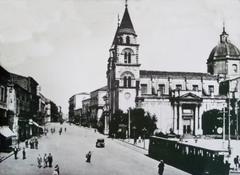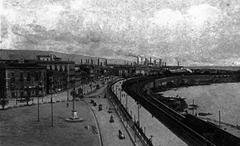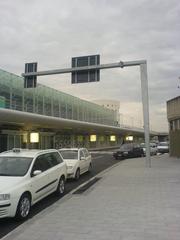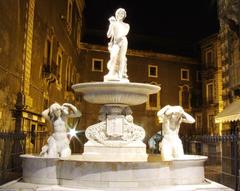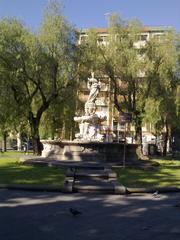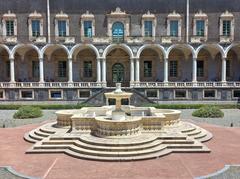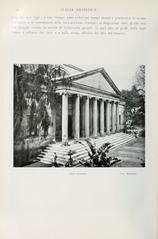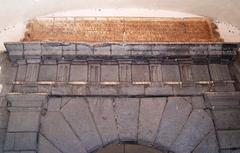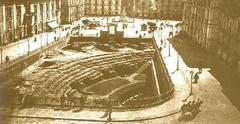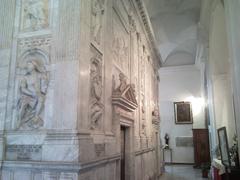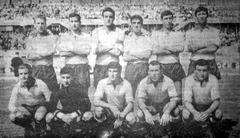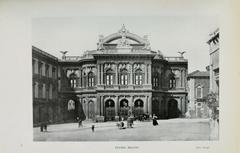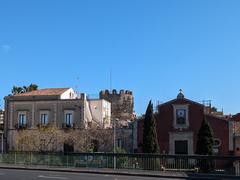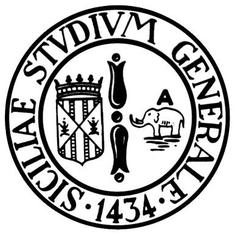
Casa Museo Giovanni Verga: Visiting Hours, Tickets, and Travel Guide | Catania, Italy
Date: 04/07/2025
Introduction
Casa Museo Giovanni Verga, located in the heart of Catania’s historic center, is a living testament to the life and work of Giovanni Verga—Sicily’s most celebrated writer and the pioneer of the Verismo literary movement. Housed in a late 18th-century palazzo at Via Sant’Anna 8, this museum preserves Verga’s original living quarters, library, manuscripts, and memorabilia. As a cornerstone of Sicilian cultural heritage, the museum provides an immersive window into 19th- and early 20th-century Catania and serves as a hub for literary tourism and scholarship. Its proximity to key landmarks such as Piazza Duomo, Teatro Massimo Bellini, and the Roman Theatre further cements its role as a must-visit attraction for those exploring Catania’s rich historical tapestry (Regione Siciliana, Visit Sicily, Italian Traditions).
This comprehensive guide provides up-to-date information on visiting hours, tickets, accessibility, and travel tips—alongside insights into Verga’s legacy, museum highlights, and recommendations for nearby attractions.
Table of Contents
- Introduction
- Historical Context & Literary Legacy
- Museum Layout & Highlights
- Visiting Information (Hours, Tickets, Accessibility)
- Tips for Visitors
- Special Events & Guided Tours
- Frequently Asked Questions (FAQ)
- Nearby Attractions
- Conclusion & Further Resources
Historical Context & Literary Legacy
The Museum’s Origins and Significance
Casa Museo Giovanni Verga occupies the apartment where Verga lived from the late 19th century until his death in 1922. Declared a national monument in 1940 and opened to the public in 1947, the museum safeguards Verga’s personal effects and vast library—over 2,600 volumes, first editions, annotated manuscripts, and correspondence—donated by his heirs (Museo Casa Verga).
Catania’s Cultural Scene
During Verga’s lifetime, Catania was a vibrant center of artistic and intellectual life. Its aristocracy and burgeoning bourgeoisie supported a cultural renaissance that shaped Verga’s literary output and fostered the rise of the Verismo movement (Visit Sicily).
Giovanni Verga and Verismo
Giovanni Verga (1840–1922), born in Catania to a noble family, revolutionized Italian literature by founding the Verismo movement. Influenced by French Naturalism, Verga’s works focus on the struggles of Sicilian peasants, employing realistic detail and psychological insight. His major works include I Malavoglia (1881), Mastro-don Gesualdo (1889), and story collections like Vita dei Campi and Novelle Rusticane. Verga’s narratives inspired Italian neorealism and have been adapted for film and theater (Treccani, Enciclopedia Italiana).
Museum Layout & Highlights
A Journey Through Verga’s Home
The museum occupies two floors of a historic palazzo, preserving the authentic environment in which Verga lived and wrote (aroundcatania.it).
Ground Floor & Vestibule:
Entry is through a modest vestibule with display cases introducing Verga’s literary world. Informational signage is limited, so audio guides and QR codes are recommended (museumspedia.net).
First Floor – The Library:
A highlight is Verga’s library, featuring 2,600 volumes, rare books, manuscripts, and correspondence with contemporaries like Capuana and De Roberto. Many books are personally bound by Verga (aroundcatania.it).
Second Floor – Private Quarters:
Original furniture and décor remain in Verga’s bedroom, study, and living spaces. Notable objects include his writing desk, funerary mask, and theatrical memorabilia such as a table from “Cavalleria Rusticana” (aroundcatania.it).
Thematic Rooms:
Each room reflects themes from Verga’s works, with the house itself inspiring the novel “Storia di una Capinera” (aroundcatania.it).
Key Artifacts:
- Manuscripts and autographs
- Rare first editions
- Theatrical memorabilia (e.g., props from adaptations)
- Family portraits and photographs
Visual resources, including high-quality images and virtual tours, are available on the museum’s website, enhancing accessibility and SEO (museumspedia.net).
Visiting Information
Location & Getting There
- Address: Via Sant’Anna, 8, 95124 Catania
- Walk: 20 minutes from Catania Centrale station (Italian Traditions)
- Public transport: City buses stop nearby
- Car: Limited parking in the center; public lots within walking distance
Opening Hours
- Monday to Sunday: 09:00–13:30 and 15:00–18:00
- Last admission: 17:30
Check for variations on holidays or special events (Parco Archeologico di Catania).
Tickets
- Full price: €4.00
- Reduced: €2.00 (students, seniors, groups)
- Free entry: On designated cultural days, e.g., “Domenica al Museo”
- Purchase: On-site; group reservations recommended
Accessibility
- Access: The museum is on the second floor without elevator access; visitors with mobility challenges may have difficulty (WhichMuseum).
- Facilities: No air conditioning, limited signage, restrooms and cloakroom not always available
Tips for Visitors
- Visit early: Weekday mornings are quieter
- Combine sites: Pair your museum visit with other nearby historical attractions for a full day of culture
- Cash: Payment is usually cash-only
- Photography: Ask for permission before taking photos, especially of manuscripts or artifacts
- Language: Exhibits are mainly in Italian; consider a translation app or guidebook
- Preparation: Check official sources for updated hours and events
Special Events & Guided Tours
- Events: The museum hosts temporary exhibitions, readings, and centenary celebrations
- Guided tours: Available by request and during special events—book in advance to ensure availability
- Audio guides & QR codes: Enhance self-guided experiences (Museo Casa Verga)
Frequently Asked Questions (FAQ)
Q: What are the opening hours?
A: Daily 09:00–13:30 and 15:00–18:00; last admission at 17:30.
Q: How much is admission?
A: €4.00 full price, €2.00 reduced, free on select days.
Q: Is the museum accessible for people with mobility impairments?
A: Access is limited due to stairs; no elevator is available.
Q: Are guided tours available?
A: Sometimes; inquire in advance or at the entrance.
Q: Can I take photos?
A: Policies vary; ask staff for permission.
Q: Are there free admission days?
A: Yes, for example, “Domenica al Museo” offers free entry (Parco Archeologico di Catania).
Q: How long does a visit last?
A: 30–60 minutes on average.
Nearby Attractions
- Piazza Duomo & Elephant Fountain
- Teatro Massimo Bellini
- Roman Theatre & Odeon
- Museo Belliniano
- Benedictine Monastery of San Nicolò l’Arena
Combine your visit to the Casa Museo with these sites for a comprehensive tour of Catania’s historic core (Comune di Catania, Around Catania).
Conclusion & Further Resources
Casa Museo Giovanni Verga offers a unique, intimate look at the world of one of Italy’s literary giants. Its well-preserved rooms, authentic collections, and evocative atmosphere make it an essential destination for literature lovers and cultural explorers. The museum stands not only as a monument to Verga’s genius but as a vibrant part of Catania’s living heritage. For a richer experience, consider using audio guides or virtual tours, and stay updated on special events via the museum’s official channels.
Contact and Updates:
- Address: Via Sant’Anna, 8, 95124 Catania, Italy
- Phone: +39 095 311004
- Official Website: Casa Museo Giovanni Verga
- Current info: Parco Archeologico di Catania, Around Catania
References
- Regione Siciliana
- Visit Sicily
- Around Catania
- Italian Traditions
- Comune di Catania
- UNESCO Tentative List
- Museo Casa Verga
- Parco Archeologico di Catania
- museumspedia.net
- WhichMuseum
- Treccani
- Enciclopedia Italiana

